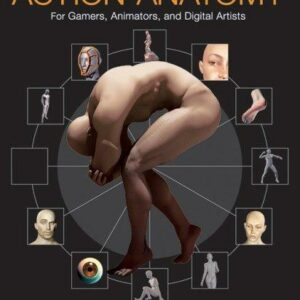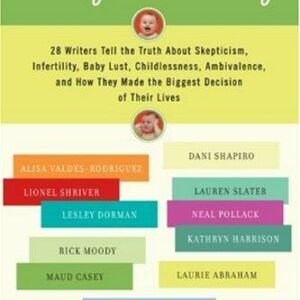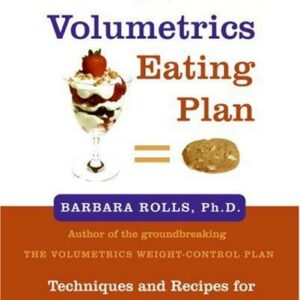Big Feelings
$26.00
| Title | Range | Discount |
|---|---|---|
| Trade Discount | 5 + | 25% |
- Description
- Additional information
Description
From the duo behind the bestselling book No Hard Feelings and the wildly popular @LizandMollie Instagram, an insightful and approachable illustrated guide to handling our most difficult emotions.
We all experience unwieldy feelings. But between our emotion-phobic society and the debilitating uncertainty of modern times, we usually don’t know how to talk about what we’re going through, much less handle it. Over the past year, Liz Fosslien and Mollie West Duffy’s online community has laughed and cried about productivity guilt, pandemic anxiety, and Zoom fatigue. Now, Big Feelings addresses anyone intimidated by oversized feelings they can’t predict or control, offering the tools to understand what’s really going on, find comfort, and face the future with a sense of newfound agency.
Weaving surprising science with personal stories and original illustrations, each chapter examines one uncomfortable feeling—like envy, burnout, and anxiety—and lays out strategies for turning big emotions into manageable ones. You’ll learn:
• How to end the cycle of intrusive thoughts brought on by regret, and instead use this feeling as a compass for making decisions
• How to identify what’s behind your anger and communicate it productively, without putting people on the defensive
• Why we might be suffering from perfectionism even if we feel far from perfect, and how to detach your self-worth from what you do
Big Feelings helps us understand that difficult emotions are not abnormal, and that we can emerge from them with a deeper sense of meaning. We can’t stop emotions from bubbling up, but we can learn how to make peace with them.”Lucid, wise, illustrated advice for when we are overwhelmed. Neither patronizing nor pedantic, just good sensible advice that helps you have more control over those mental avalanches.”
—Matt Haig, #1 New York Times bestselling author of The Midnight Library and The Comfort Book
“Writing (and drawing) with their signature insight and humor, Liz and Mollie dispense the wisdom and compassion we all need for working through our most difficult emotions.”
—Susan Cain, author of Bittersweet: How Sorrow and Longing Make Us Whole
“Over the past few years, our emotions have often gotten the better of us. This book will restore your sense of control—and make you feel less alone in the world. Liz and Mollie do an outstanding job bringing your fuzziest feelings into sharp focus.”
—Adam Grant, #1 New York Times bestselling author of Think Again and host of the TED podcast WorkLife
“Big Feelings is a work of tremendous heart. Filled with vulnerability, humor, and hard-won insights, it offers concrete tools to help us move through difficult emotions.”
—Lori Gottlieb, New York Times bestselling author of Maybe You Should Talk to Someone and cohost of the Dear Therapist podcast
“The rise of stress, burnout, and anxiety is one of the most urgent issues of our time. Big Feelings is a vital guide to not only handling complex emotions but learning to thrive through difficult times—and emerge even more resilient.”
—Arianna Huffington, founder & CEO, Thrive Global
“Big Feelings is not another self-help book. It is an intelligent, empathetic, and often delightful guide to navigating life’s most difficult moments and emerging from them with a new-found sense of meaning.”
—Daniel H. Pink, #1 New York Times bestselling author of When, Drive, and A Whole New Mind
“This book is witty, insightful, and filled with brilliant, signature cartoons about work, life, and everything in between. Big Feelings is just the honest, funny, and useful read we all need right now.”
—Katy Milkman, bestselling author of How to Change
“A timely gift as we collectively struggle with tendencies to despair, to compare ourselves, and to overwork ourselves into burnout. As always, Liz and Mollie have nudged us in the direction of becoming more informed, more empathetic, and more whole, so we can show up in the world with more bravery.”
—Mari Andrew, New York Times bestselling author of My Inner Sky and Am I There Yet?
“Combining compassion with their trademark visual wit, Liz and Mollie deliver a message we all need to hear in our current unsettled moment: feeling bad isn’t bad.”
—Cal Newport, bestselling author of A World Without Email and Deep Work
“A candid, warm, and practical guide to navigating difficult emotions. Liz and Mollie’s work is full of wise ideas, expressed both through storytelling and memorable illustrations. This book will absolutely enrich many lives.”
—Tara Mohr, author of Playing Big: Practical Wisdom for Women Who Want to Speak Up, Create and LeadLiz Fosslien is the Head of Content at Humu, a company that uses behavioral science to make work better. Liz’s writing and illustrations have been featured by the Economist, The New York Times, NPR, and Freakonomics.
Mollie West Duffy is an organizational and leadership development expert. She has helped companies and start-ups such as Casper develop good workplace culture. She writes a blog about start-up culture, and has written for Harvard Business Review, Entrepreneur, Fast Company, and Quartz.
1. What brought you to this book?
2. What is a Big Feeling? Which Big Feelings do you experience most often?
3. What were you taught as a child about Big Feelings? How did that impact how you view them or experience them today?
4. Overall, which stories from the authors or readers resonated with you most? Which illustrations resonated with you most? Why?
5. Liz describes a moment of radical uncertainty when she was in an ambulance, wondering if she was going to die. What is radical uncertainty and have you experienced a similar moment?
6. What is fear? What is anxiety? Why is knowing the difference important? Can you name one or two of your anxieties versus one or two of your fears?
7. Using the mantra on page 14, “I am a person who is learning _____” try reframing two or three of your anxieties. How do you feel after each reframing?
8. We’ve been taught that “comparison is the thief of joy” and that all comparison is bad. The authors argue, however, that certain types of comparison—in certain contexts—can be healthy and even beneficial. Has comparison ever helped you move toward a goal or achievement?
9. What’s the difference between benign envy and malicious envy? Give examples of when you experienced each type of envy. How did each manifest internally and externally?
10. Why is it important to “compare the nitty-gritty” when comparing your life to someone else’s? Consider someone who you’ve felt envious of for a specific achievement or accomplishment. Using the sample questions on page 54, compare the nitty-gritty of that achievement and accomplishment. How does that change your envy or how you think about that achievement or accomplishment?
11. How comfortable are you with anger: your own and other people’s? Where did your attitudes or feelings about anger and expressions of anger come from?
12. Jot down a list of your anger triggers. If comfortable, share with the group. What is an amygdala hijack and how can identifying and acknowledging these triggers prevent one?
13. What is your anger expression style? How can you better communicate your feelings when angry?
14. What are the three distinct burnout profiles and which have you experienced?
15. Why is it important to recognize when burnout is pending? What are the specific warning signs you experience when you have pending burnout?
16. Using the Nagoski sisters’ list on page 99, which burnout coping tools appeal to you? Are there two or three of your own healthy coping tools you can add to this list? Share ideas with the group.
17. What is garbage time and why should you embrace it? How can you build more short bursts of garbage time into your days?
18. It is a myth that perfectionists always appear perfect. Because this is not the case, it can be difficult to identify perfectionism in ourselves and others. On page 125, the authors list several clues that you’ve tied your worth too closely to meeting an unrealistic goal. Which of these clues resonate? Does this align with your self-evaluation as a perfectionist (or not)?
19. If you identify as a perfectionist, explore where you learned you were not good enough. If comfortable, share with the group.
20. To begin charting a better course for yourself, write out your perfectionist thoughts and then review the prompts on page 135. Reflect on what each teaches you and how you can untangle yourself from a perfectionist self-narrative.
21. If comfortable sharing, explore a time when you felt despair. What is despair and how does it differ from depression and anxiety?
22. What steps can you take to work through despair? Which feel possible and which feel impossible? Why?
23. Liz shares that one of her biggest regrets is not traveling to Germany with her mom to sort through her grandmother’s house and decide whether to sell or keep it. Looking back, what do you regret most? Why? Discuss with the group.
24. Refer to the Types of Regret on pages 189–90. Which type of regret plagues you the most? Using the authors’ tips about each type of regret, what can you do about it?
25. How can Big Feelings ultimately benefit us? What is post-traumatic growth (PTG?) Have you experienced it? If comfortable, share your PTG experience with the group.
Chapter 1
Uncertainty
Liz: The first headache hit like a jackhammer. I stumbled toward the bathroom, dizzy and gagging.
A week later, the second sent me to the emergency room. After a barrage of blood draws and scans, the doctors ruled out a list of life-threatening issues-pulmonary embolism, brain aneurysm, tumor-and categorized me as a medical mystery.
Searching for a diagnosis is excruciating. “Don’t worry until you have something to worry about,” a coworker told me. But I worried all the time. I yo-yoed between imagining the worst possible outcome and feeling like a drama queen. Was I dying? Or was it absolutely nothing?
That was my life for months. I shuttled between neurologists; ear, nose, and throat specialists; and ophthalmologists. One neurologist gave me thirty-six injections of Botox in my head, shoulders, and back to prevent neurotransmitters from sending pain signals to my brain. An ophthalmologist thought the muscles around my eyes might be inflamed, and prescribed steroid medication that skyrocketed my blood pressure and made my cheeks flush a dark pink.
Then an internist suggested that I had an atypical case of migraines and put me on a high dosage of Topamax, an antiepileptic drug. The clanging in my skull finally quieted, but the side effects that popped up left me just as out of sorts. My emotions exploded. One afternoon, I stepped onto the L train in Chicago and into the clutches of the worst panic attack I’ve ever experienced. I clung to a ceiling pole. When the doors opened again, I crawled out onto the Merchandise Mart platform and forced one foot in front of the other until I was finally back at my apartment. I spent the rest of the day in bed, shaken and ashamed.
In the morning, I emptied the pill bottle into the toilet. I was done with Topamax.
I didn’t know that it can be life-threatening to stop prescription medication cold turkey.
At four o’clock the next afternoon, my heart lurched. I managed to make it to the lobby of my apartment building before I lost consciousness. When I came to, I was strapped to a gurney in the back of an ambulance. A nurse’s face swam before my eyes. She told me my parents were on their way.
“Am I going to die?” I felt the back of my neck prickle in terror as darkness clouded my vision again.
The nurse looked at the jagged line displayed on a nearby monitor. “I don’t know.”
“I don’t want to die before my mom gets here,” I tried to tell her, but I couldn’t move my mouth anymore. Then everything went black.
¥ ¥ ¥
“This is a period of radical uncertainty, [by] an order of magnitude greater than anything we’re used to,” said Columbia University historian Adam Tooze in April 2020. That October, a New York Times headline announced, “awake at 3 a.m.? we are too.” The same year, the most popular Harvard Business Review articles were about how to navigate turbulent times and grieve the loss of a guaranteed future.
As millennials-“the new lost generation,” according to The Atlantic-we (Liz and Mollie) have lived through three major economic recessions, have quarantined for more than a year during a global pandemic and a devastating wildfire season in California, and view 401(k) matching (let alone pensions) as a relic. We consider ourselves to be among the fortunate, and even we felt overwhelmed by uncertainty.
Psychologists who study stress have identified three primary factors that make us feel awful: a lack of control, unpredictability, and the perception that things are getting worse. In other words: uncertainty.
In this chapter, we’ll deconstruct uncertainty and the emotion at its core: anxiety. To clarify definitions before we continue:
Anxiety is general unease because of an uncertain outcome. We feel anxious when we aren’t sure how larger forces will interfere with our lives.
Fear is when we believe that something specific will happen (like tripping over your words during an important presentation, or a loved one dying).
We’ll start by walking through three common myths around uncertainty and the anxiety it causes and then offer a few ways to find solid footing even when the world moves beneath you.
Myths about Uncertainty
Myth #1: Certainty is attainable
While sheltering in place during the first few weeks of the pandemic, we felt that we were living through a period of unprecedented uncertainty. (We werenÕt alone: Google searches for the word ÒunprecedentedÓ spiked to, well, unprecedented highs in March 2020.) But the level of uncertainty during the Cuban Missile Crisis or World War I or even the bubonic plague was just as great, if not much greater, than it is today.
Life can change in an instant. At age thirty-three, Liz’s CrossFit-loving, teetotaling friend developed a sharp pain in his ankle. Three weeks later, he was diagnosed with bone cancer, and a week after that his right leg was amputated. Or take Liz herself, who decided to buy a treat at Berkeley Bowl, a local grocery store, on her way home from a particularly draining day at work. While beelining through the produce section, she bumped into a friend-of-a-friend she had met once years ago. He suggested they grab coffee together sometime. Five years later, she married him.
We tend to be too confident about our ability to predict the future. Behavioral scientists have shown that we’re overly optimistic about things we want to happen, we notice immediate changes but tend to overlook longer-term shifts, and we overemphasize the importance of new information that fits into our existing beliefs. If you really want to travel to Paris, you’ll probably see flight prices going down as a sign but then shrug and ignore it if your hotel stay suddenly becomes more expensive. The track record of “expert” forecasters (think economists and meteorologists) is so dismal that some claim that being an expert in something actually makes you worse at predicting the future than if you were a generalist.
The ancient teachings of Buddhism center on this fundamental problem. “We can try to control the uncontrollable by looking for security and predictability,” writes Buddhist teacher Pema Chodron, “always hoping to be comfortable and safe. But the truth is that we can never avoid uncertainty. This not-knowing is part of the adventure.” And precisely what makes us anxious.
Myth #2: Anxiety accurately reflects risk
ThereÕs often a mismatch between how stressed we feel about something happening and the likelihood that that thing will happen. In an experiment, researchers told one group of people they had a 99 percent chance of receiving a painful (but safe) electric shock and told the other group they had a 1 percent chance. Surprisingly, the two groups were willing to pay about the same amount of money to avoid the shock. In other words, the likelihood of getting hurt didnÕt affect peopleÕs anxiety about getting hurt-or what they would do to avoid the scenario.
The more uncertainty we face, the worse we feel. When the risk level of a decision is unknown, brain activity spikes in the area that processes emotions. Research even shows we’d rather be absolutely sure that something bad is going to happen than deal with ambiguity. Scientists found that people who had a 50 percent chance of receiving an electric shock were three times as stressed as people who had a 90 percent chance of getting the shock. (Seems 100 percent certain that uncertainty researchers love delivering electric shocks.)
If we know what the bad thing is, we can plan for it. But when we don’t know what’s going to happen, we spiral. “I knew for a long time that I had to leave,” reader Carmen told us after finally quitting a job that had made her miserable. “But I was so anxious about having to figure out my next steps that I chose unhappiness over uncertainty for four years.”
So while it’s normal to fret in the face of uncertainty, your emotional reaction might be disproportionate to reality. Not knowing is the worst. But it can be useful to say to yourself, “The fact that I’m worried about the future doesn’t guarantee that the future will be bad.” Ahead of her wedding, reader Marcie had trouble sleeping. “I’m bad with change and get nervous ahead of any big event,” she told us. But Marcie, who has now been happily married for twenty-five years, realized, “My insomnia wasn’t about me doubting my relationship.”
Myth #3: You just need to be more resilient
Over the past few years, “resilience” has popped up everywhere as the answer to everything. Having a hard time because of a toxic environment? Just be resilient. Struggling to homeschool your kids while working fifty-hour weeks during a global pandemic? Try some resilience.
Resilience, or the ability to withstand hardship and bounce back from difficult events, is useful. But too often it’s presented in a way that overlooks systemic problems and instead encourages individuals to grin and bear whatever tough stuff comes their way. In an article titled “Smile! You’ve Got Cancer,” author Barbara Ehrenreich writes, “There is no kind of problem or obstacle for which positive thinking or a positive attitude has not been proposed as a cure.”
Being told to look on the bright side when you’re suffering can be frustrating when coming from a friend, family member, or acquaintance, but it’s particularly galling when institutions and society at large use resilience as a way to sidestep responsibility for protecting people’s mental well-being. In 2020, amid concerns about the economy, their families, and their health, people became twice as likely as in previous years to feel overwhelmed by changes at work. The same year, nearly 75 percent of employees reported experiencing burnout at least once. And while burnout was almost universal, it was particularly bad for working mothers: nearly three million women dropped out of the labor force during the pandemic. As a source told psychiatrist Pooja Lakshmin, a women’s mental health specialist, for an article about how her patients struggled during COVID, “The crushing toll on working mothers’ mental health reflects a level of societal betrayal.”
So we’re proponents of resilience, but not the kind that places blame on the individual or absolves leaders and institutions from their obligation to make structural improvements. There’s a huge gap between demanding that everyone be mentally tough and helping them take care of their mental health. We’ll spend the rest of this chapter walking you through a few mind-sets and strategies for how to better navigate uncertainty. Unfortunately, while the forces that cause uncertainty and anxiety are often not your fault, how you respond is your responsibility. But our goal is not to help you continue to battle for survival in a toxic environment. We want to help you achieve whatever outcome is best for you. That might mean reframing your thoughts to feel less anxious. Or it might mean walking away from an unhealthy situation entirely.
¥ ¥ ¥
Liz: Obviously, I didn’t die in the ambulance. I spent a day in the hospital and was then discharged into uncertainty.
After my panic attack on the L, I refused to take more mood-altering medication, even when my migraines started to come back. Over the next few months, everything revolved around pain. I would start scanning my body the moment I woke up. Was that a normal, minor muscle spasm, or the early rumblings of something more sinister? I went to work but then hurried back to the quiet, dark embrace of my apartment. I was too embarrassed to reply to concerned emails and texts. How could I explain what was going on? From the outside, I looked perfectly healthy.
I hit an emotional wall a few months later, on my birthday. By 3 p.m., I still hadn’t gotten out of bed. My mom was now calling me every hour. Each time I picked up, she sounded more and more worried. I was worried, too. I’d never felt this low before. Was this going to be the rest of my life? Just a bleak mixture of work and hiding under the covers with the blinds closed?
Looking back, I think some kind of instinctual survival mechanism must have kicked in that day. I was suddenly absolutely beside myself. The force of my fury made me sit up in bed. This was unfair and unfun and I was f*cking over it. I wanted to hug my mom and put on nail polish and go to a diner with friends and shove a greasy cheeseburger in my mouth. I wanted to claw back some control over my life.
For the next five weeks, I religiously tracked my schedule, moods, and migraines to see how they might be related. I scoured WebMD and migraine message boards for nonmedication treatment options. Based on what I learned, I cut out alcohol and chocolate, avoided the sun like a vampire, and made sure to be in bed at 9 p.m. to get a full night’s rest. I signed up for acupuncture on Tuesdays and Thursdays and started going to a nearby gym to get in thirty minutes of moderate exercise every day.
I decided to stick to my routine religiously for six months and see how it went. At that point, if my migraines were still bad, I’d reconsider medication or look into other, more intensive treatment options.
That also meant turning down business school. I had been admitted to Stanford, but the lifestyle I’d need to follow to thrive there seemed completely at odds with what I needed to do to take care of myself.
I also put safeguards in place for when my anxiety threatened to take over. I made myself a “brain cotton candy” list, which included Twitter memes, the r/aww subreddit (photos of cute animals), and news about the Kardashians. In moments when I started to sink into rumination, I would force myself to take out my phone and ingest brain cotton candy. I started to see friends again, though usually for air-conditioned lunches instead of 8 p.m. dinners outside in the heat and humidity.
I’m far from “cured.” I’ll never be able to lie on a sunny beach for hours without paying for it later. I still have a flare-up once every few months. But I’m able to manage my atypical migraines and live my life, and I don’t let worries about the future consume me anymore. I take care of myself, and then I take it day by day.
How to Work through It
“There’s [an] art of being at home in the unknown,” writes author Rebecca Solnit, “so that being in its midst isn’t cause for panic or suffering.” People who learn to become more comfortable with uncertainty tend to rely on processes to help them navigate chaos. Those processes usually focus on two things: decreasing the amount of risk we expect and boosting our belief that we can handle uncertainty. This takes practice, but over time, you can feel more confident and start to see uncertainty as less overwhelming.
US
Additional information
| Weight | 18.6 oz |
|---|---|
| Dimensions | 1.0100 × 6.1200 × 8.5300 in |
| Imprint | |
| Format | |
| ISBN-13 | |
| Author | |
| Audience | |
| BISAC | |
| Subjects | motivational books for men, motivational books, motivational books for women, money, self help books for women, business books, feelings book, self development books, self improvement books, mental health books, personal growth books, psychology book, feelings books, best friend gifts, social psychology, millennial gifts, no hard feelings, depression, mental health, psychology, BUS107000, business, self help, anxiety, leadership, motivation, culture, PSY031000, Emotions, confidence, feelings, graduation gifts, self help books, psychology books |











